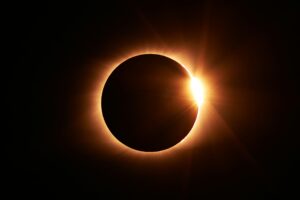05/07/2013
On 13th June 2013, the Supreme Court – the highest court in the US – issued its decision in Association for Molecular Pathology v Myriad Genetics, Inc. concerning the patentability of isolated human genes. The court held that “a naturally occurring DNA segment is a product of nature and not patent eligible merely because it has been isolated”. However, complementary DNA (cDNA) was found to be patent eligible because it is not naturally occurring. The decision reverses the long-established practice of the US Patent & Trademark Office of granting patents for naturally-occurring gene sequences as long as they are “isolated” from nature.
Background
Myriad discovered the precise location and sequence of the BRCA1 and BRCA2 genes, and obtained US patents relating to these genes. Mutations in these genes can substantially increase the risk of developing breast and ovarian cancer.
The court considered the following types of claims: claims to isolated genomic DNA encoding BRCA polypeptide, i.e. DNA isolated from the human genome by the breaking of chemical bonds; and claims to cDNA – synthetic DNA produced by reverse transcription of the messenger RNA (“mRNA”) encoding the BRCA polypeptides. Non-coding “intron” sequences that are found in genomic DNA are not present in mRNA, and so are also absent from the cDNA copy. Consequently, cDNA sequence is different from that found in genomic DNA.
The Decision
The court concluded that Myriad’s claims to isolated DNA were directed to unpatentable naturally occurring phenomena or products of nature. Myriad did not create or alter the genetic information encoded in the BRCA genes. The location and order of the nucleotides existed in nature before Myriad found them. Nor did Myriad create or alter the genetic structure of DNA. The court considered that Myriad’s “principal contribution was uncovering the precise location and genetic sequence of the BRCA1 and BRCA2 genes”.
The court was not persuaded by Myriad’s arguments that isolating the DNA from the human genome severs the chemical bonds thereby creating a non-naturally occurring molecule, stating that Myriad’s claims focus on the genetic information encoded by the gene rather than the chemical changes resulting from the isolation. The court was also not persuaded by Myriad’s argument that the USPTO’s past practice of awarding gene patents is entitled to deference.
However the court did find that the creation of a cDNA sequence from mRNA results in a molecule that is not naturally occurring. Accordingly, it held that cDNA is not a “product of nature” and consequently is patent eligible. The Court did clarify though that fragments of cDNA that are “indistinguishable from natural DNA” are not patent-eligible.
The court pointed out what was not covered by its decision. No method claims were at issue, and the court noted that, had Myriad discovered an innovative method of manipulating genes while searching for the BRCA genes, it could possibly have sought a method patent. The court also noted that its decision did not involve patents on new applications of knowledge about the BRCA genes, the subject of many of Myriad’s unchallenged claims.
Finally, the court emphasised that they merely hold that genes and the information they encode are not patent eligible simply because they have been isolated from the surrounding genetic material. The patentability of DNA in which the order of the naturally occurring nucleotides has been altered was not considered.
Impact Of The Decision
The full effects of this decision will not be known for some time. However, for now at least, it appears that the effects on the biotechnology industry may be relatively modest. Isolation of genes is old technology. Use of synthetic DNA, such as cDNA and recombinant DNA, is now commonplace. It should, therefore, be relatively straight forward to draft claims of useful scope that do not cover isolated DNA. There also remains the possibility that many other gene-related inventions are patent-eligible, including new applications for genes and new processes for obtaining or using genes.
There is some concern, however, over the effect of the decision for the patent-eligibility of other isolated biomolecules, such as proteins. It is not yet clear whether the decision will be applied to claims to such molecules when isolated from their natural environment. This will, no doubt, be the subject of future patent disputes in the US.
The decision does not impact on European patent law. The European Patent Office has for many years granted claims to isolated gene sequences and continues to do so provided the requirements for novelty and inventive step are met. It has long been understood in Europe that newly discovered genes are patent-eligible on the basis that what is claimed is essentially a new chemical entity that is isolated from its native environment and, at least by virtue of its isolation, cannot be considered a product of nature.
This article is for general information only. Its content is not a statement of the law on any subject and does not constitute advice. Please contact Reddie & Grose LLP for advice before taking before any action in reliance on it.


